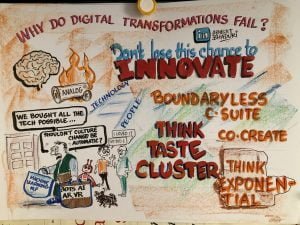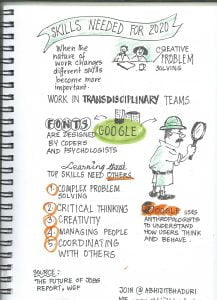 How do you get employees excited about learning? This was a question that Abhijit Bhaduri was grappling with back in 2009 when he was the Chief Learning Officer at Wipro, the information technology services company headquartered in Bengaluru, India.
How do you get employees excited about learning? This was a question that Abhijit Bhaduri was grappling with back in 2009 when he was the Chief Learning Officer at Wipro, the information technology services company headquartered in Bengaluru, India.
This was quite a challenge, particularly given the size of Wipro (160,000 employees at the time across 54 countries). It was important for Abhijit to accomplish this goal by cutting across different geographies and levels.
Abhijit had the idea to try addressing this issue in part by sending out a regular weekly communication to the entire organization. This consisted of a 200-250 word written email on a topic that would resonate with the entire organization (such as how to instill curiosity or new year’s resolutions). Accompanying this message was a graphical  representation (similar to the ones included in this story) of the key points highlighted in the email. An overwhelming majority of employees opted in to continue receiving the weekly communication.
representation (similar to the ones included in this story) of the key points highlighted in the email. An overwhelming majority of employees opted in to continue receiving the weekly communication.
“Within six months of doing this, I started to receive back a tremendous response,” explained Abhijit on episode eight of the Learning and Development Stories podcast. “Initially I tried to respond to everyone who wrote until I realized that this would require another full-time position.”
Tying learning to organizational objectives
This initiative correlated to a key goal that Abhijit and his L&D colleagues were looking to address: creating a culture where employees are continually learning, both formally and informally. Related to this was the importance of instilling a mindset of curiosity. The L&D team undertook a number of other different initiatives related to this goal.
“The overall idea was to help people become more curious about how to use technology, apply new concepts and look for ideas from the outside,” Abhijit said. “We needed people to be more externally focused, to take control of their own learning and to stay curious.”
Lessons from mistakes
Abhijit explained how he and his colleagues have evolved in their approach to putting together learning designs.
“We stopped designing materials for the person in the classroom as an end-consumer to actually viewing this person as the teacher,” he said. “We started to believe that learning happens when the person in the classroom begins teaching someone else.”
In other words: see one, do one and teach one.
This manifests itself in different ways, ranging from individuals sharing knowledge during in-person events to communicating insights on an internal communications platform like Yammer.
The link between training and employee engagement
 On the topic of engagement, Abhijit referenced Daniel Pink’s work around motivation: freedom to interpret your role, your own skills and seeing how it makes a difference.
On the topic of engagement, Abhijit referenced Daniel Pink’s work around motivation: freedom to interpret your role, your own skills and seeing how it makes a difference.
“You don’t learn to enjoy something unless you have a certain level of skill in in,” Abhijit noted. “Skill is a big part of engagement. It is underleveraged. If a job is interesting, it triggers the ability to learn more, become more skilled and then you perform your job at a higher level.”
Resources
Abhijit believes that L&D professionals need to be able to leverage the 3 V’s: video voice and visuals.
In terms of recommended content, he notes that “it is really about whatever works best for you and how you best learn, whether it is podcasts, Instagram and so forth. Social media offers so many options. There are always experts available on tap.”
Connect with Abhijit on Twitter and LinkedIn and learn more about his work at his website.
[thrive_leads id=’2433′]
[thrive_leads id=’2432′]
